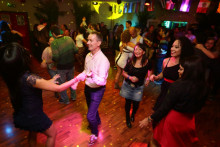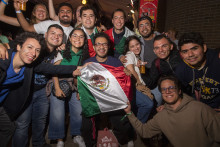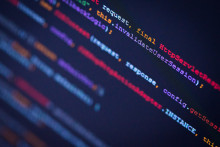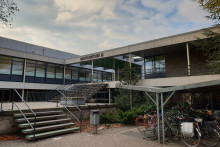The party took place on Saturday, the 26th of September 2015, in Rico Latino in Enschede. Those who joined had the chance to taste some traditional cocktails and snacks, made from proper ingredients imported all the way from Latin America. With two dance floors, the party was also a very intense dancing lesson.
We have an army!
Besides a lot of fun, the event was an opportunity to learn more about the history and culture of the region. 'We don´t organize it to remind ourselves of home, but to share Latin America with others,' says Arturo Perez Rivera, a board member of LA VOZ.
A ton of dancing and typical Latin cocktails. In a nutshell, that´s how local students celebrate Independence Day, but what does this holiday look like in Central or South America? Each country naturally has its own specific customs, but all of them organize official parades, many of them military related. 'It´s a national holiday with many military, civil and street parades. There are also military shows to display all the capabilities of air force, for example - airplanes, parachute jumpers etc. It´s almost like saying: We have an army, so don´t colonize us again,' laughs Rana Taquini, a LA VOZ member from Brazil.
When did we become independent?
Are you a bit unclear on when and how Latin American countries became independent? No worries, so are they. 'First the region of Central America became independent from Spain. However, a few days later they received a letter from Mexico, in which they were kindly asked to annex to a newly formed state of Mexico. If they refused, they would be invaded,' explains Rivera. Afterwards the region became a part of Mexico for 10 years.
'So we celebrate independence, but we are still not really sure when exactly we became independent. It´s still an issue that raises questions,' says Rivera. His fellow LA VOZ member, Rudolph Jauregui from Venezuela, agrees: 'We officially became independent about 200 years ago, but still today we are doubting if we really are independent. Every time a new leader emerges and promises to make things better, but nothing really changes.'
No big change
At least officially, most involved countries gained their independence in the years of 1821-1822. Federal Republic of Central America, which consisted of today´s countries Guatemala, El Salvador, Honduras, Nicaragua and Costa Rica, declared independence on the 15th of September 1821, while Mexico did the same only a few days later on the 27th of September 1821. Brazil became free of Portugal on the 7th of September 1822. Out of all of these counties, Mexico was the only one that had to fight for its independence from Spain. The rest simply declared themselves independent in a peaceful manner.
Funnily enough, the separation from their colonizers didn´t affect the countries very much. 'In many cases the king or a person in power also became the first ruler of the newly formed state. Especially in Brazil, where there were no internal movements fighting for independence, it took a while for people to realize anything has happened. Everything still worked the same, so ordinary people didn´t notice any change,' Bruno Guasti Motta tells about the situation is his home country.
A day for patriotism
In case you missed the latest LA VOZ event, you don´t have to worry. It might not be clear when exactly they became free of their invaders, but people from Latin America are still proud of their homelands and they will surely celebrate the Independence Day again next year. As they say: 'It´s a day that makes us proud. A chance to show our patriotism.'













